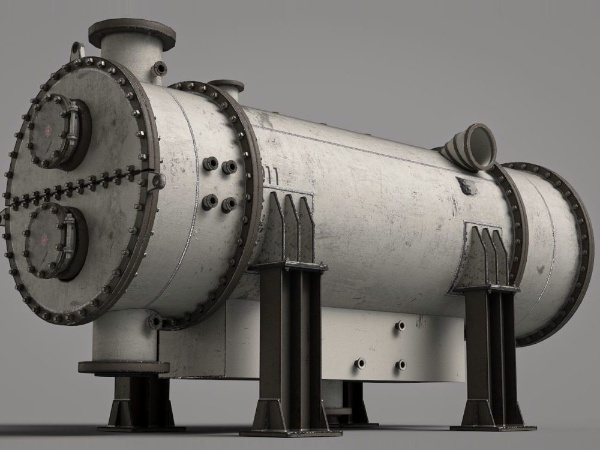Air Cooled Steam Condenser Vs Water Cooled Steam Condenser?
| Feature | Air-Cooled Condenser (ACC) | Water-Cooled Condenser (WCC) |
| Cooling Medium | Ambient Air | Water (River, Sea, Lake, Cooling Tower) |
| Key Driver for Selection | Water Scarcity | High Thermal Efficiency |
| Water Consumption | Zero (Only minor makeup for the steam cycle) | Very High (Once-through) or Moderate (Cooling Tower – mostly evaporation loss) |
| Thermal Efficiency | Lower and Variable. Highly dependent on ambient dry-bulb temperature. Performance drops on hot days. | Higher and More Stable. Dependent on water temperature or wet-bulb temperature (for towers), which is more stable. |
| Capital Cost | Higher. Due to massive finned-tube bundles, large fans, and extensive structural support. | Lower (for the condenser itself). But the overall cost depends on the water system (pumps, pipelines, cooling towers). |
| Operating Cost (Energy) | Higher Fan Power. Fans consume a large amount of electricity to move air. | Lower Pump Power. Circulating water pumps generally use less energy than ACC fans. |
| Operating Cost (Other) | Low (no water treatment). | High (water treatment chemicals, maintenance of water systems). |
| Environmental Impact | No thermal pollution. No chemical discharge. Main impacts are land use and noise pollution from fans. | Thermal Pollution (once-through systems). Chemical Discharge (from water treatment). Water consumption. |
| Location Flexibility | High. Can be installed anywhere, independent of a water body. Ideal for arid regions. | Low. Must be located near a large, reliable water source. |
| Footprint & Space | Very Large. Requires a significant area for the A-frame structures and fans. | Compact (for the condenser itself). Cooling towers and pump houses also require space. |
| Maintenance | Fan and gearbox maintenance. Cleaning of finned tubes from dust/debris. | Tube cleaning (to prevent scaling/biofouling). Corrosion control. Water system maintenance. |
| Condensate Recovery | Yes, the condensate is recovered and returned to the boiler. | Yes, in surface condensers, the condensate is recovered and returned to the boiler. |
1. Water Usage: The Primary Decision Factor
ACC: The single biggest advantage is zero water consumption for cooling. This makes it the only viable option for power plants in arid and semi-arid regions (e.g., parts of China, India, Australia, South Africa, the US Southwest).
WCC: Requires massive amounts of water. A 500 MW plant with a once-through system can use over 500,000 gallons of water per minute. Even with a cooling tower, it loses significant water to evaporation.
2. Performance and Efficiency
ACC: Its performance is its biggest weakness. The condensing temperature (and therefore the turbine back-pressure) is directly tied to the ambient air temperature.
On a cold day: Performance is reasonably good.
On a hot day (e.g., 40°C / 104°F): The turbine back-pressure rises significantly, reducing the plant’s electrical output by 5-10% or more compared to its rated capacity. This is a major economic penalty.
WCC: Performance is superior and more stable.
Once-through systems rely on the water temperature, which is more stable than air temperature.
Cooling tower systems rely on the wet-bulb temperature, which is always lower than the dry-bulb temperature and has less daily fluctuation. This results in a lower, more stable turbine back-pressure and higher, more consistent power output.
3. Economics: Capital vs. Operating Cost
ACC: High Capital, High Operating (Energy) Cost.
You pay more upfront for the equipment and then pay more every day in electricity to run the large fans.
WCC: Lower Capital (for the condenser), Variable Operating Cost.
The condenser itself is cheaper, but the water system (pumps, pipelines, cooling towers, water treatment plant) adds cost.
Operating costs are dominated by water pumping power and chemical treatment.
. Environmental and Site Considerations
- ACC: Solves the water problem but creates others. The large physical footprint and the constant, loud noise from the fans can be a significant issue for nearby communities.
- WCC: Has a major impact on water resources—either through consumption (cooling towers) or thermal pollution (once-through systems). Obtaining permits for water use and discharge is becoming increasingly difficult.
